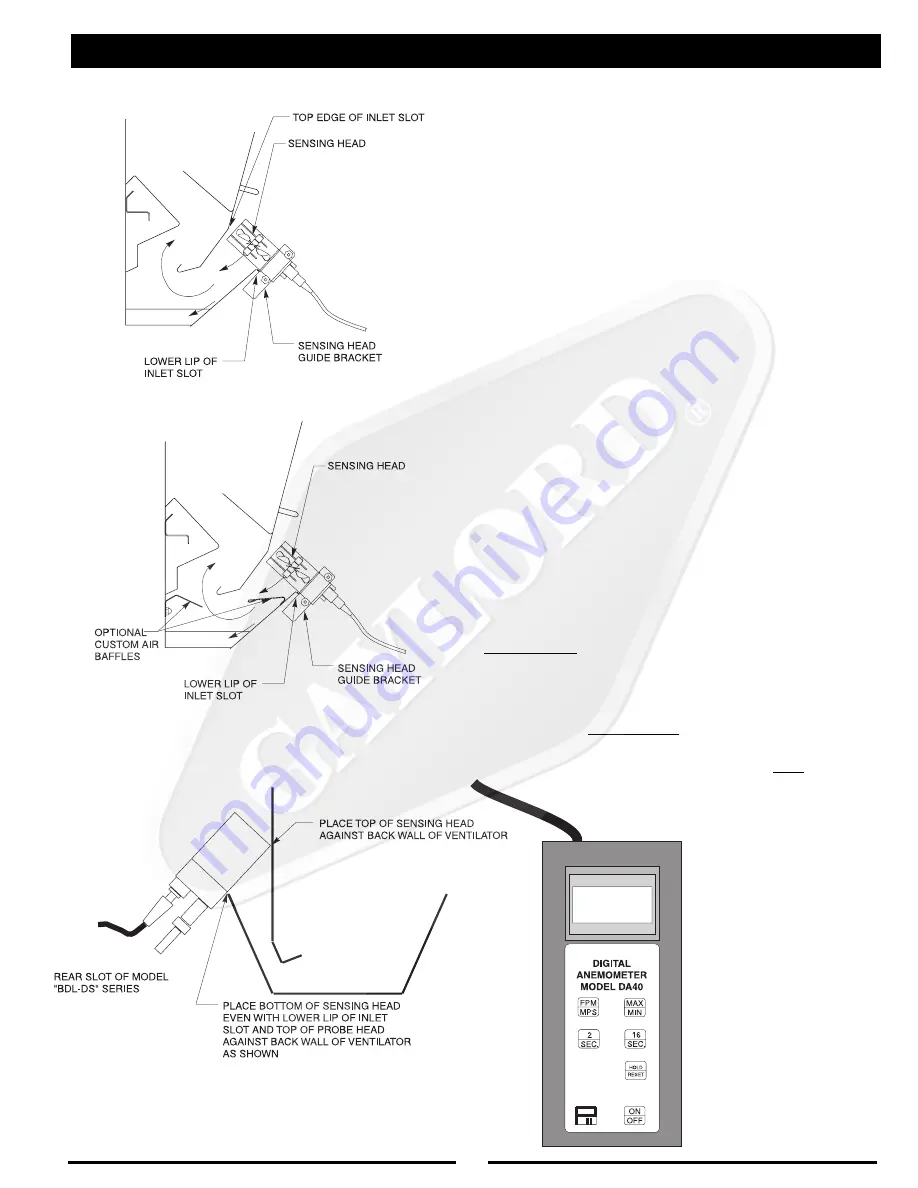
13
MEASURING INLET SLOT VELOCITY
FIG. 5A
FIG. 5B
FIG. 5C
CROSS SECTION OF TYPICAL
VENTILATOR INLET SLOTS
The standard instrument used for measuring the inlet velocities on a Gaylord
Ventilator is a Pacer, Model DA40 or DA4000 Digital Anemometer. This
instrument is the easiest, most accurate and the best suited for measuring
ventilator inlet slot velocities. To take accurate air velocity readings, follow
the instructions below.
Instructions
1. It is first necessary to determine if the ventilator includes Custom Air baffles
as shown in Fig. 5B. If shop drawings are available, and if equipped, the
custom baffles and their location will be noted on the front elevation. If not
available, to determine if Custom Air baffles are provided run your hand along
the bottom inlet slot and feel for the Custom Air baffle as illustrated in Fig. 5B.
2. If the ventilator includes Custom Air baffles, it will be necessary to take two
sets of readings - one for the section of ventilator that includes Custom Air baffles
and one where it does not.
3. Attached the sensing head guide bracket, Gaylord Part Number 18408, to
the sensing head.
4. Attach the cable from the sensing head to the meter and the handle
sections to the sensing head.
5. Place the sensing head guide bracket against the lower lip of the inlet slot
as illustrated.
6. Using the 16 second averaging feature on the meter, slide the sensing head along
the slot, back and forth, for a 3'-0" to 4'-0" distance, and record the velocity at the end
of the 16 second mark. Continue this process for the full length of the ventilator.
Important Note: If the ventilator includes custom air baffles as illustrated in Fig.
5B, always take separate readings on the section of the ventilator that includes
custom air from the section that does not have the baffles. Non custom air and
custom air readings must be recorded separately. Do not average them together.
Important Note: On the rear slot of a Model BDL-DS Series, do not use the
guide bracket. Refer to Figure 5C.
7. Record the velocity (fpm) on the start up inspection report form. A sample
report form, which can be photocopied, is provided on page 16.
8. The designed, or optimum velocity, is noted on the shop drawings and
the Air Velocity Chart on page 12. Two velocities will be noted if the ventilator
includes custom air baffles.
9. Compare the recorded air velocity to the designed air velocity shown on the
shop drawings or the Air Velocity Chart on page 12. The recorded velocity may
be slightly lower or higher providing that it is within the minimum and maximum
range as shown on the Air Velocity Chart .
If the air velocity is outside the minimum/maximum range, the performance of
the ventilator will be affected and therefore the exhaust fan must be adjusted.














































